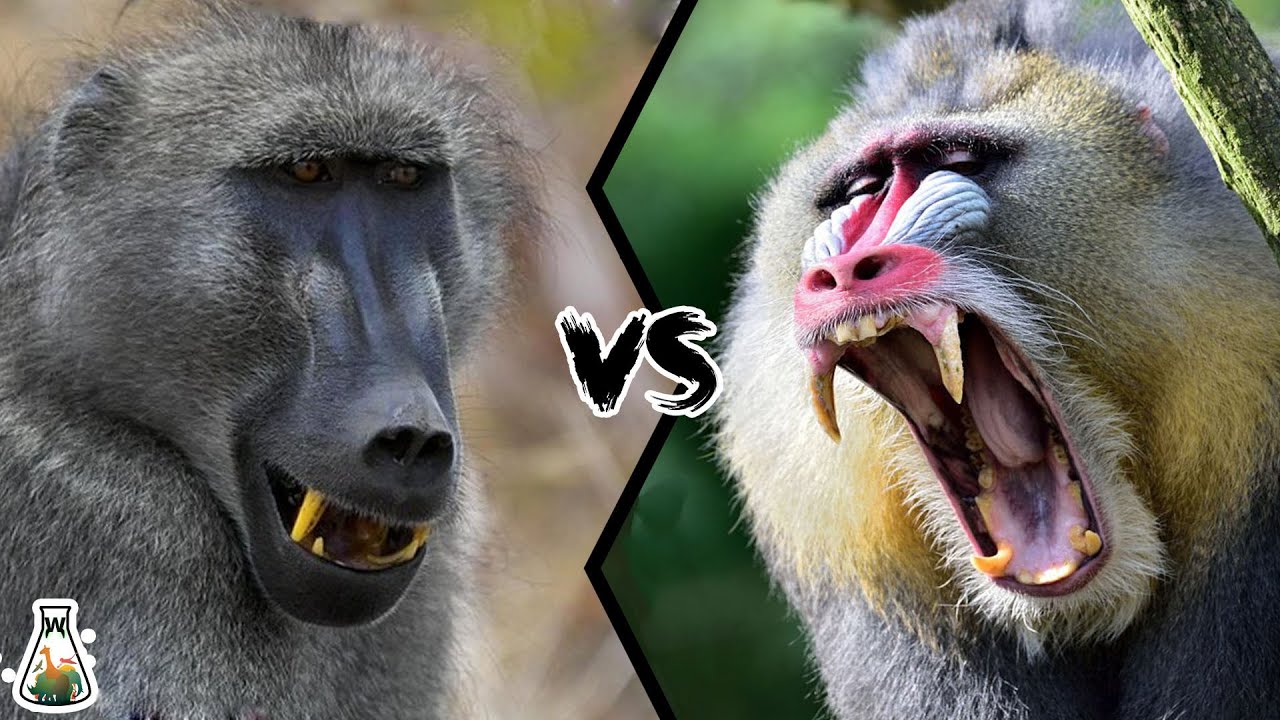Mandrills, along with related drills, were previously grouped as baboons of the genus Papio. Both are currently classified in the genus Mandrill, but all belong to the Old World Monkey family, Cercopithecoides. Differences between baboons and monkeys Baboons are old-world monkeys, but in general monkeys can be either old-world or new-world. Monkeys are terrestrial or arboreal, but baboons always live on the ground. Baboons have long muzzles like dogs, but not all monkeys. .. .. Other items. Like the mandrill, the drill is a sturdy quadruped with a brightly colored butt. The drill is barely small, and the male is about 82 cm (32 inches) long. Men are bigger than women. The surface of the drill is the black surface of the bright red reduced lip. The hair on the entire face and the tufts behind all ears are yellowish white.
What is the difference between baboons and monkeys?
Monkeys originate from Central America. There are five species of baboons, but there are no subspecies of monkeys and mandrills. Another difference is that the mandrill has blue and pink pores and skin on its face.]
What kind of animal is a mandrill?
Mandrillus sphinx is a primate of the Old World Monkey (Sarcopithecidae) family. This is one of two species assigned to the drill as well as the Mandrill species. Both mandrills and drills were once classified as baboons of the Papio tribe, but now have their own genus Mandrill.
What is the difference between Mandrill and Drill Monkey?
These two species are closely related in that they are both shy monkeys. The main difference between them is that the drills are not as colorful as the mandrills. Instead of this, there is a male lilac drill and a red genital organ, which is also very impressive in the color appearance of the mandrill.
How many types of baboons do you have?
Baboons are Old World monkeys, and five different species are listed under one genus, Papio. They are now naturally distributed in African and Arabian habitats. Previously, gelada baboons, drills, and mandrills were also classified as baboons, but later grouped separately from baboons.
Are baboons and mandrills related?
Along with Mandrill, it is one of the two species of the genus Mandrill. Superficially similar to baboons, but more closely related to the genus Cercocebus mangabay. Mandrill is found in southern Cameroon, Gabon, Equatorial Guinea and the Republic of the Congo.
Why is Mandrill not a baboon?
With a long face and a red striped nose, the mandrill looks like a flashy baboon. However, scientists comparing bones and teeth have found that mandrills are more closely associated with long-legged monkeys called Mandrills. .. Baboon bones, on the other hand, resemble the bones of Mangabay, which inhabits trees.
Do mandrills eat humans?
Herbivores. Although grasses, fruits, seeds, fungi, roots, and they are primarily herbivores, mandrills feed on insects and small vertebrates. Leopards, crowned eagles, chimpanzees, snakes, and humans.
Why is Mandrill so aggressive?
Mandrills can be dangerous, primarily because they are strong primates with long, sharp teeth. If they feel threatened by them, they can seriously hurt people or other animals. Due to its long canines, it can easily penetrate the skin of both humans and animals and even bite parts of the skin.

Below you will find two helpful answers on a similar topic. 👇
What is the collective noun for a family of otters?When did the first Panda come out in Europe?
